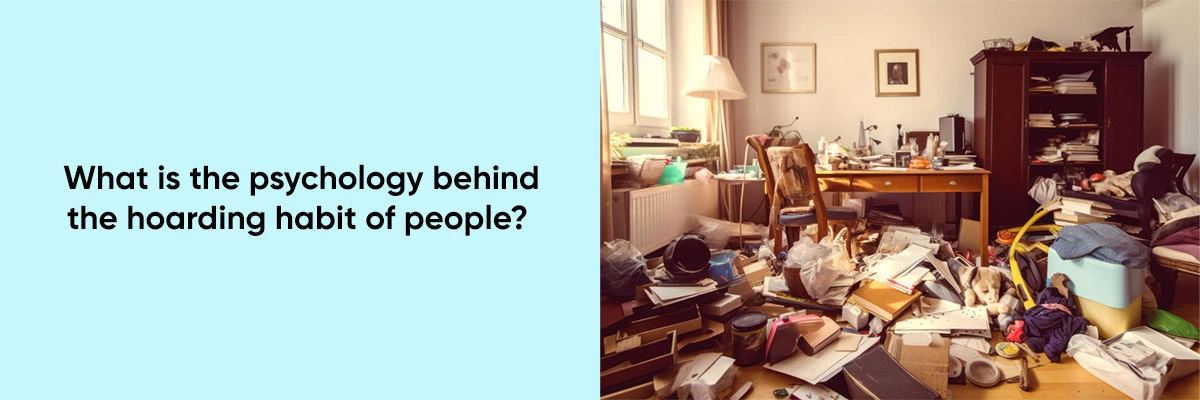In a world where minimalism is praised, the concept of hoarding stands in stark contrast. Hoarding, a behavior often associated with the excessive accumulation of possessions, has fascinated psychologists and researchers for years.
But what drives this compulsion to collect and keep items, sometimes to the point of overwhelming clutter, and what are the guidelines for hoarding for compliance with far housing? Let’s delve into the intricate psychology behind hoarding habits.



The Nature of Hoarding
Hoarding isn’t just about stockpiling belongings; it’s a complex psychological issue characterized by an inability to discard possessions, regardless of their value. Individuals who hoard might collect seemingly mundane items, attaching immense sentimental or perceived utility to each item. There are 5 stages of hoarding, you need to identify the level and take appropriate actions to address the hoarding issues.
Psychological Underpinnings
Several psychological factors contribute to hoarding behaviors:
- Emotional Attachments:
Emotional attachments play a pivotal role. Hoarders often associate items with memories, emotions, or a sense of security. Each object becomes a vessel for sentimentality, making the thought of discarding it akin to losing a piece of oneself.
- Fear of Discarding:
A fear of making the wrong decision fuels hoarding tendencies. Hoarders dread the possibility of discarding something they might need in the future, leading to an incessant need to save everything, just in case.
- Perceived Utility:
The belief that items may have some utility or value in the future is a driving force. This perceived usefulness, even if improbable, reinforces the compulsion to accumulate things.
- Control and Security:
Hoarding can stem from a desire for control and security. Objects become a source of comfort and stability in an otherwise unpredictable world, providing a false sense of control over one’s environment.
- Psychological Disorders Associated with Hoarding:
Hoarding is often linked to other mental health conditions, such as obsessive-compulsive disorder (OCD), anxiety, depression, and attention-deficit/hyperactivity disorder (ADHD). These conditions can exacerbate hoarding behaviors, making it challenging to manage or overcome without proper support.
- Treatment and Support:
Overcoming hoarding behaviors often requires a multifaceted approach involving therapy, cognitive-behavioral interventions, and sometimes medication to address underlying mental health conditions. Therapy sessions can help individuals understand the root causes of their hoarding and develop strategies to gradually declutter and manage possessions.
Guidelines for Identifying and Assisting Hoarders in Compliance with Fair Housing
Identifying and assisting hoarders while ensuring compliance with fair housing laws involves a delicate balance between addressing the issue and respecting an individual’s rights and dignity. Here are steps that can help in this process:
Identification:
- Observation:
- Excessive Clutter: Noticeable accumulation of items obstructing pathways or creating unsanitary conditions.
- Distress Signals: Signs of distress or anxiety when discussing possessions or potential cleanup.
- Reports or Complaints:
- Neighborhood Concerns: Reports from neighbors about excessive clutter or potential safety hazards.
- Landlord/Tenant Notices: Reports from property managers or landlords regarding property damage or lease violations due to hoarding.
Approach:
- Compassionate Communication:
- Empathy and Understanding: Approach the individual with empathy, acknowledging their feelings and concerns.
- Non-Judgmental Dialogue: Avoid criticism or judgmental language that might trigger defensiveness.
- Education and Resources:
- Explain the Issue: Help the individual understand the potential risks associated with hoarding, such as fire hazards or health concerns.
- Provide Supportive Resources: Offer information about support groups, mental health professionals, or community services specializing in hoarding disorders.
Compliance with Fair Housing:
- Reasonable Accommodations:
- Reasonable and Accommodating Solutions: Work with the individual to find solutions that balance their needs with safety and compliance.
- Adapted Cleanup Plans: Develop cleanup plans that respect the individual’s pace and mental health needs.
- Documentation and Collaboration:
- Documentation: Maintain records of communication and assessments regarding hoarding behaviors, ensuring documentation complies with fair housing laws.
- Collaboration with Professionals: Collaborate with mental health professionals or social workers experienced in hoarding disorders to develop a comprehensive support plan.
Legal Considerations:
- Fair Housing Laws:
- Fair Housing Act Compliance: Ensure that interventions and approaches comply with fair housing laws, respecting the individual’s rights and avoiding discrimination based on disabilities or mental health conditions.
- Legal Counsel Consultation: Seek legal advice to navigate fair housing laws and ensure that interventions are lawful and respectful.
Continuous Support:
- Ongoing Assistance:
- Long-Term Support: Recognize that overcoming hoarding is a gradual process, requiring ongoing support and encouragement.
- Follow-Up: Regular check-ins and follow-ups to monitor progress and offer additional support when needed.
Final words:
The psychology behind hoarding habits reveals a complex interplay of emotions, fears, and perceptions. It’s crucial to recognize that hoarding is more than just a lifestyle choice; it’s a psychological issue that requires empathy, understanding, and professional intervention.
Breaking the cycle of hoarding involves not only decluttering physical spaces but also addressing the emotional attachments and thought patterns that drive the behavior. With the right support and guidance, individuals grappling with hoarding tendencies can embark on a journey toward a more manageable and fulfilling life, free from the suffocating weight of excessive possessions.


